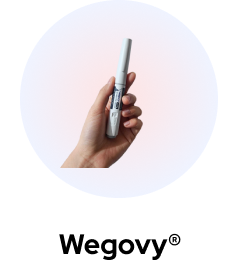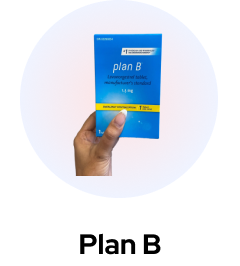Ozempic and semaglutide are two hot-button topics much discussed at the moment. But what exactly are they and how do they differ?
In this article we’re going to cover:
- What Ozempic is
- What semaglutide is
- The differences between the two
- What causes type-2 diabetes and what treatment options are out there
- Things you should consider before starting Ozempic or semaglutide
- What other substitutes are available on the market
- Frequently asked questions.
Read on to learn more!
Ozempic is primarily prescribed to adults with type-2 diabetes to lower their blood sugar levels. Drugs marketed by Novo Nordisk include Ozempic Wegovy and Rybelsus.
Ozempic has been approved by Health Canada as a healthcare tool to assist with weight management in those who are overweight and with a body mass index (BMI) of 27 or higher.
The active ingredient in Ozempic is semaglutide. Semaglutide mimics the functions of the glucagon-like peptide-1 (GLP-1) receptor agonist class in the body, and is able to assist with glycemic control, as well as send messages to the hunger receptors in the brain.
In this way, semaglutide is able to assist the pancreas with insulin production and liver with glucose production, as well as affect feelings around fullness and satiety.
People taking Ozempic for type-2 diabetes or for assistance with weight management will have better control over their blood sugars, as well as potentially be placed in a caloric deficit. Those who incorporated lifestyle intervention, such as a healthy diet and regular exercise and activity, had even better results.
Additionally, results from multiple studies have shown that the use of semaglutide can massively reduce the risks of major cardiovascular events and cardiovascular disease. This includes:
- Risk of heart attack
- Risk of stroke
- Risk of hypertension (high blood pressure)
- Risk of high cholesterol
- Death.
Since semaglutide is the active ingredient in Ozempic, this means that they are one and the same.
Side Effects Associated with Ozempic
While Ozempic is considered to be a safe drug with many benefits, there are some side effects associated with it which you should be aware of.
Some commonly reported and mild side effects include:
- Nausea
- Vomiting
- Diarrhoea
- Constipation.
These are often experienced when patients first begin the drug and when their dose is increased. With the disclaimer that everyone is different and others may react differently, mostly these side effects dissipate over use.
If you’re concerned or your side effects are persistent or worsen, talk to your medical team for advice.
In rare instances, these more serious side effects can also occur from use of Ozempic:
- Pancreatitis
- Severe allergic reactions
- Hypoglycemia
- Issues with your vision
- Gallbladder complications
- Issues with your kidneys
- Thyroid cancer.
If you experience any of the above more serious side effects, discontinue your use of Ozempic immediately and contact your medical team, or go directly to your local ER.
If you have a personal or family history of medullary thyroid cancer (MTC) or multiple endocrine neoplasia type 2 (MEN 2), you should not use Ozempic or semaglutide-based medications. Additionally, if you are pregnant, planning on conceiving in the next couple of months, or breastfeeding, talk to your medical team before starting Ozempic.
There are a number of contraindications for Ozempic and semaglutide. Be sure to fully disclose to your medical team what prescription medications you’re currently taking, including vitamins and supplements, as this may affect your use of the drug.
Instructions on How to Take Ozempic
Ozempic is intended to be self-administered once a week. It comes in pre-dosed Ozempic Pens, with doses including:
- 0.25 mg
- 0.5 mg
- 1 mg
- 2 mg.
Ozempic should be administered subcutaneously, ie, beneath the skin into the fatty layer of tissue. Suggested sites include the abdomen, thigh, or upper arm. You should be sure to rotate the injection site each time.
Generally, you’ll begin on the lowest dose of Ozempic (0.25 mg), then move up to a maintenance dose (0.5 mg) at the 4 week mark. If you require further blood sugar control after that, your medical team may adjust your dose to 1 mg or 2 mg.
Each Ozempic pen contains enough dose content for a month’s (four weeks’) worth of medication. Be sure to use a fresh needle and dispose of the used needle each time in a sharps container, and never share your Ozempic pen with anybody else, even with a fresh needle.
You can watch a full video on how to administer your Ozempic dose on the Novo Nordisk website. If you’re still unsure, talk to your medical team or pharmacist.
What Is Semaglutide?
Semaglutide is the active ingredient in Ozempic, as well as many other semaglutide-based medications. It mimics the natural GLP-1 receptor agonist found in the body and is able to help regulate blood sugars in the blood, as well as hunger receptors in the brain.
Active Ingredients in Semaglutide
Semaglutide is the active ingredient of Ozempic and other semaglutide-based medications. In all regards and purposes, they are one and the same.
Side Effects Associated with Semaglutide
Because semaglutide and Ozempic are the same drug, they generally would have the same side effects, both common and mild, and more rare and severe.
If you’re concerned about any of the side effects associated with semaglutide, talk to your medical team for advice.
Instructions on How to Take Semaglutide
Under the brand name Ozempic, semaglutide is taken as outlined above.
Under other brand names, semaglutide can be taken differently, although it’s almost always taken as an injection into the thigh or upper arm.
Difference Between Ozempic & Semaglutide
There is no difference between Ozempic and semaglutide. Semaglutide is the active ingredient in Ozempic, so they are the same drug.
Here we break it all down for you in a handy table.
Ozempic | Semaglutide | |
Active Ingredient | Semaglutide | Semaglutide |
Purpose | Lowers blood sugar levels in adults with type-2 diabetes | Lowers blood sugar levels in adults with type-2 diabetes |
Administration | Weekly injection into the thigh | Injection into the thigh or upper arm |
Difference | No difference | No difference |
Treatment Options | Insulin, GLP-1 receptor agonists (including Ozempic and other semaglutide products), Metformin, GLP-1 and GIP receptor agonist (Tirzepatide) | Insulin, GLP-1 receptor agonists (including Ozempic and other semaglutide products), Metformin, GLP-1 and GIP receptor agonist (Tirzepatide) |
Risk Factors/Max Dose Limits | 2 mg (max injectable semaglutide dosage for type 2 diabetes), 2.4 mg (under the brand name WeGovy, used as a weight management drug) | 2 mg (max injectable semaglutide dosage for type 2 diabetes), 2.4 mg (under the brand name WeGovy, used as a weight management drug) |
Use | Can be used interchangeably | Can be used interchangeably |
Efficacy | Equal | Equal |
When it comes to side effects, Ozempic and semaglutide have the same side effects (as noted above). They are also contraindicated for many of the same medications.
Discuss your use of Ozempic or semaglutide with your medical team before embarking on treatment so that you can be sure that the drug is suitable for you.
It’s important to understand how type-2 diabetes is caused and what your treatment options are.
Unlike type-1 diabetes, type-2 diabetes can be treated more effectively, and in some cases those with the condition may even be able to return to their pre-diabetes lifestyle (with some notable changes).
Causes of Type 2 Diabetes
Type 2 diabetes can be caused by a few different factors and conditions, including:
- Family history of type-2 diabetes (genetic)
- Obesity
- Impaired glucose tolerance
- High cholesterol or other fats in the blood.
An Overview of Treatment Options for Type 2 Diabetes
Other than GLP-1 receptor agonists, which stimulate the release of the body’s natural insulin, there are a few other options for treatment of type-2 diabetes.
Unfortunately, we do not yet have the medical knowledge to completely cure type-2 diabetes, but there are ways to manage and live with the condition with an improved quality of life.
Here are some other type-2 diabetes treatments available in Canada:
- Insulin
This is one of the most common and longest utilised treatments for diabetes. Diabetes means that your body isn’t producing natural insulin efficiently, so taking insulin, usually through an injection in the stomach, is a simple solution.
- GLP-1 Receptor Agonists
This includes Ozempic and other semaglutide products. Other GLP-1 receptor agonists include exenatide and liraglutide.
- Metformin
This is usually the first medication suggested for patients with type-2 diabetes. It works by lowering your body’s glucose levels. This allows for the body to produce more natural insulin.
- GLP-1 and GIP receptor agonist.
Tirzepatide (Mounjaro) is the only diabetes treatment that is a dual GLP-1 and GIP receptor agonist. GIP receptors also stimulate insulin secretion.
It’s also important to make the right lifestyle changes in order to manage your diabetes naturally. A balanced diet, regular exercise, and effective weight management can make a huge difference in your quality of life.
Other Considerations for the Use of Ozempic & Semaglutide
Of course, you should be fully aware of all of the factors when considering using a new medication.
When it comes to the cost of the drug, the list price in Canada is much lower than in the U.S. Additionally, there are currently no shortages of the drug. However, insurance providers are likely to only consider covering the cost of Ozempic or semaglutide in full or part if you are able to satisfy their criteria.
On average, as long as you’ve been prescribed the drug for either control of type-2 diabetes or for assistance with weight management if you have a BMI of 27 or over (and in some cases with other pre-existing weight-related medical issues), your insurance will cover the cost of the drug.
However, it is entirely dependent on your insurance policy and provider, so be sure to contact your provider to discuss your personal circumstances with them.
Risk Factors and Maximum Dose Limits for Patients With Type 2 Diabetes
Ozempic’s highest semaglutide dosage is 2 mg. This is also generally the maximum amount of injectable semaglutide recommended for adults with type-2 diabetes.
Semaglutide is sold at 2.4 mg under the brand name Wegovy, but only as a weight management drug.
Does the Dosage Differ Between Ozempic and Semaglutide?
Ozempic’s dosage of semaglutide ranges from 0.25 mg to 2 mg.
There are different dosage sizes of semaglutide sold under different brand names.
Determining When to Use Ozempic or Semaglutide
There is no difference between using Ozempic or semaglutide, as they are the same drug.
If you have a type-2 diabetes diagnosis and think Ozempic might be a good fit for you, talk to your medical team for more information.
Exploring Alternatives: Are There Substitutes for Ozempic and Semaglutide?
In terms of sole semaglutide prescribed for type-2 diabetes, there are no close alternatives to Ozempic. However, there are other GLP-1 receptor agonists available for type-2 diabetes treatment.
For example, liraglutide (sold under the brand name Saxenda) is another GLP-1 receptor agonist available in Canada. This medication is taken once daily to manage blood sugar levels.
Another drug that is proving to be extremely effective is tirzepatide (sold under brand name Mounjaro), a dual GLP-1 and GIP receptor agonist. Its primary function is for the treatment of type-2 diabetes, but it has also been proven highly effective for assistance with weight management.
Key Takeaways
Semaglutide is the active ingredient in Ozempic. There is no difference between the two. Semaglutide is also sold under the brand name Wegovy at a higher dosage, but under Wegovy its primary use is as a weight management tool.
You should be aware that Ozempic or semaglutide has a number of contraindications associated with it, meaning that it will not be suitable for all users. There are also a number of side effects, both common and mild, and more rare but severe.
If you’re considering taking Ozempic or another semaglutide-based medication, talk to your medical team for full information and to determine whether or not it’s the right drug for you.
Frequently Asked Questions (FAQs)
Can Ozempic and semaglutide be used interchangeably?
Yes. Ozempic and semaglutide are the same drug and can be used interchangeably. However, at a higher dosage, semaglutide is sold only as a weight management drug under the brand name Wegovy.
Which is more effective: Ozempic or semaglutide?
They are equal in terms of efficacy, as they are the same drug.
Are there any known interactions between Ozempic and semaglutide?
No. Semaglutide and Ozempic do not interact negatively with each other, as they are the same drug. There are, however, a number of contraindications with other medications and supplements.
If you’re considering taking Ozempic or a semaglutide-based drug, talk to your medical team for full information.













 (US)
(US)